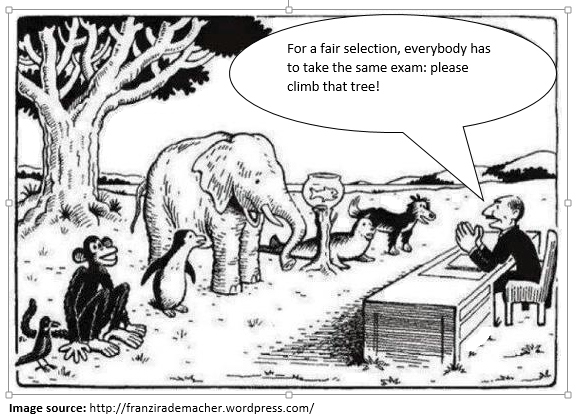Reflect on the key ideas
My position on language assessment
Part 1
Think of your (future) teaching practice and read the following statements. Try to take a stance for each statement and find arguments that support your position.
- I think assessing the language competences of my students is very important.
- For me it is easy to assess my students’ language competences.
- I could assess the language competences of the majority of my students straight away.
- I am able to assess my students’ language competences in their first language(s).
- Assessing language competences is within my area of responsibility.
- When assessing language competences, the entire linguistic repertoire of a student should be considered.
- I encourage my students to use all of their languages in class.
Part 2
Take a look at the following list of challenges encountered when assessing multilingual students:
- scarcity of appropriate assessment tools (are there assessment tools for all languages represented in your classroom and do they meet the quality standards required for reliability and validity?)
- lack of financial resources
- lack of articulated programme philosophies or mission statements about English-language learners
- difficulty attracting and retaining bilingual and bicultural staff
- lack of community awareness of the importance of the issue
Now think of the situation at your school. Which of these challenges do you encounter when assessing your students? Are there challenges at your school that are not mentioned here? What changes to testing, assessment and evaluation formats should be made by education decision makers and policy makers to improve the situation? What could you do personally?
Source: National Association for the Education of Young Children (2005): Screening and Assessment of Young English-Language Learners.
Before starting to assess
Take a look at the following image:
What thoughts come to your mind if you look at the image and think of the language competences of your multilingual students?
If it is difficult to imagine students, you can use these learner profiles.

Imagine you would like to assess the language competences of one or more of your students.
- What factors should you take into account before starting the assessment?